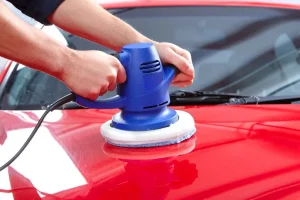Introduction
Tire maintenance should be a top priority for every driver. It ensures your safety, prolongs the lifespan of your vehicle, and can save you money in the long run. This blog post will guide you through the essentials of DIY tire repair and maintenance, making it easier for you to keep your tires in top-notch condition.
By the end of this article, you’ll understand how to identify signs of tire wear, how to maintain your tires, repair common issues, and recognize when to seek professional help. Let’s get rolling!
Signs of Tire Wear
Recognizing tire wear is crucial. Worn-out tires can affect your car’s performance and safety. Here are some common signs of tire wear to watch out for:
Uneven Tread Wear
If you notice that the tread on one side of your tire is wearing down faster than the other, it could be a sign of improper alignment. This uneven wear can cause handling problems and reduce traction, especially on wet roads.
Cracks and Bulges
Cracks or bulges in your tires indicate structural damage. This damage can occur from hitting potholes or curbs. Driving on damaged tires is risky, as they could blow out at any moment.
Low Tread Depth
Tread depth is essential for maintaining grip on the road. If your tread depth is below 2/32 of an inch, it’s time to replace your tires. You can use a penny to check this; insert it into the tread with Lincoln’s head upside down. If you can see all of Lincoln’s head, your tread is too low.
DIY Tire Maintenance
Maintaining your tires at home is easier than you might think. Here are some step-by-step guides to help you keep your tires in excellent condition:
Checking Tire Pressure
Proper tire pressure is vital for safety and fuel efficiency. Use a tire pressure gauge to check your tire pressure regularly. Compare the reading to the recommended pressure listed in your car’s manual or on the driver’s side doorjamb. Add or release air as needed.
Measuring Tread Depth
Tread depth affects your car’s ability to grip the road. Use a tread depth gauge or the penny test mentioned earlier to measure your tread depth. If your tread is too low, consider replacing your tires.
Inspecting Tire Alignment
Improper alignment can cause uneven tire wear and affect your car’s handling. Look for signs of uneven tread wear or have a professional check your alignment if you’re unsure.
Repairing Common Tire Issues
Even with regular maintenance, you might encounter tire issues. Here’s how to fix some common problems:
Fixing Punctures
Punctures are common but can be easily fixed with a tire repair kit. Locate the puncture, remove any debris, and follow the kit instructions to patch the hole. Ensure the patch is secure before driving.
Addressing Slow Leaks
Slow leaks can be tricky to detect. Inflate your tire to the recommended pressure and check it again in a few days. If the pressure has dropped significantly, you likely have a slow leak. Use soapy water to locate the leak and patch it.
Repairing Cuts
Cuts in your tire’s sidewall can be dangerous. If the cut is deep, it’s best to replace the tire. For minor cuts, use a tire patch kit to seal the damage temporarily. However, visit a professional as soon as possible for a more permanent solution.
When to Seek Professional Help
While DIY tire maintenance is helpful, some situations require professional intervention. Here are some examples:
Severe Damage
If your tire has significant damage, such as a large gash or multiple punctures, it’s best to have it inspected by a professional. They can determine whether the tire can be repaired or needs replacement.
Persistent Issues
If you notice recurring problems with your tires, such as frequent loss of pressure or uneven wear, seek professional help. There might be underlying issues, such as suspension problems or faulty alignment, that need addressing.
Lack of Tools or Experience
If you lack the necessary tools or experience to repair your tires, consider visiting a mechanic. They have the expertise and equipment to handle complex tire issues safely.
Conclusion
Maintaining and repairing your car tires is essential for safety and performance. Regularly checking for signs of wear, maintaining proper tire pressure and tread depth, and addressing common issues can keep your tires in great condition.
Remember, while DIY maintenance can save you money, some situations require professional help. Don’t hesitate to visit a mechanic when needed.
